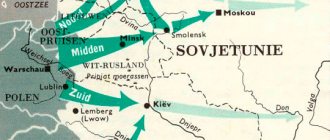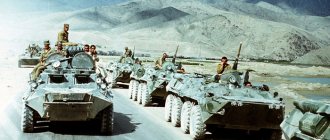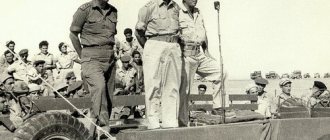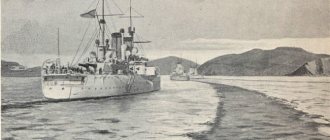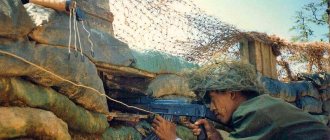Angola on the map of Africa: geographical location
Angola is one of the African states created after the Second World War. In order to navigate the situation that existed in this state throughout the second half of the 20th century, you must first understand where Angola is located on the map and what territories it borders on. The modern country is located in South Africa.
It borders in the south with Namibia, which until the end of the 1980s was completely subordinate to South Africa (this is a very important factor!), and in the east with Zambia. In the north and northeast is the state border with the Democratic Republic of the Congo. The western border is the Atlantic Ocean. Knowing which states Angola borders with, it will be easier for us to understand the ways of invasion of the territory of the state by foreign troops.
Cautious assistance from the USSR
Several groups fought against the colonialists. The USSR, which had been showing increasing attention to the African continent since the mid-50s, invariably supported the MPLA, since this movement arose with the great influence of the Angolan section of the Portuguese Communist Party. The Soviet Union began to cautiously support the MPLA from the late 1950s through the international department of the CPSU Central Committee and a buffer organization, the Soviet Committee for Solidarity of Asian and African Countries (established in 1956).
At first, the USSR, of course, was much more attracted to African states that had already won independence - Ghana, Guinea, Congo, Egypt. They tried to find a counterbalance to Western pressure in the Soviet Union, so they made pro-socialist statements and implemented certain elements of economic policy typical of socialist countries.
The Soviet communists were involved in liberation movements as such (in particular in Portuguese-speaking Africa) in the third or fourth place. To a much greater extent, these movements attracted the attention of Cuba, as well as the PRC. Scandinavia, traditionally sensitive to the rights of racial minorities, and the dictatorship-free part of Western Europe also periodically drew attention to the plight of the aborigines in Salazar's colonial empire.
Portugal was a remnant of the pro-fascist alliance of the 1940s, which, like Franco's , avoided democratization by pledging allegiance to the NATO bloc. According to the recollections of veterans of Soviet African policy, working with the Angolans (and with other representatives of national liberation movements) was not easy. It was difficult for domestic politicians and security officers to navigate the multitude of factions due to tribal diversity and the rather amorphous views of applicants for USSR aid.
There were scandals and conflicts. Exaggerated demands, false information about the power of the underground, counting on abundant financial support. Contrary to the myths that exist today that the USSR gave away everything to everyone, as soon as potential partners declared allegiance to socialism, our country has been eyeing the MPLA for a long time. At first the help was very modest. They paid for air tickets, accepted students for free studies, gave a platform in the media, and supported the activity of Angolan human rights organizations at the international level.
Only when it was confirmed that the MPLA acts from a national position, having rejected any tribalism, that the organization’s program is reasonable, progressive, but not ultra-left (they were afraid of Chinese influence) in nature, when they were convinced of the seriousness of the movement’s leader Agostinho Neto (the Portuguese Communist Party especially asked for him), USSR assistance to the Angolans became more significant. Thus, in 1963, through the International Trade Union Fund for Assistance to Left and Labor Organizations of the MPLA, formed by the socialist countries, 50 thousand dollars were allocated. Activists of the organization were accepted to study at military training centers of the USSR and Czechoslovakia. Previously, they had already begun training in Algeria and Cuba.
wikipedia.org/Public Domain
Reasons for the start of the war
The war in Angola did not start spontaneously. From 1950 to 1960, three different groups formed within Angolan society, which considered their task to be the struggle for the independence of the state. The problem is that they could not unite due to ideological incompatibility.
What are these groups? The first group - MPLA (stands for the People's Movement for the Liberation of Angola) - considered Marxist ideology as the ideal for the development of the state in the future. Perhaps Agostinho Neto (the leader of the party) did not see the ideal in the state system of the USSR, because the purely economic views of Karl Marx were slightly different from what was presented in the Union as Marxism. But the MPLA relied on international support from the countries of the socialist camp.
The second group is the FNLA (National Front for the Liberation of Angola), whose ideology was also interesting. FNLA leader Holden Roberto liked the idea of independent development, borrowed from Chinese philosophers. By the way, the activities of the FNLA posed some danger for Angola itself, because Roberto’s rise to power threatened the country with collapse. Why? Holden Roberto was a relative of the President of Zaire and promised to give him part of the territory of Angola if he won.
The third group - UNITA (National Front for the Total Independence of Angola) - was distinguished by its pro-Western orientation. Each of these groups had certain support in society and a different social base. These groups did not even try to make peace and unite, because each of the parties envisioned too different ways of fighting the colonists, and most importantly, the further development of the country. It was these contradictions that led to the outbreak of hostilities in 1975.
Enlightenment or oppression?
Angola officially became a colony of Portugal in 1655. As usual, the colonialists sucked all the juices out of the fertile colony, and the aborigines were widely used as slaves in the most difficult jobs, especially in Brazil. It would not be an exaggeration to say that the anger and hatred of the people of Angola against the colonialists accumulated over centuries and reached its peak in the mid-twentieth century.
Of course, today you can often hear the opinions of some scientists that the colonialists brought certain knowledge, technical progress, and so on to the peoples they oppressed. But my attitude towards the policies of colonialism and imperialism has not changed since Soviet times. If progress was made, it concerned a negligible number of Angolans. But lack of rights and poverty affected everyone.
On January 3, 1961, cotton plantation workers in Baixa de Cassange went on strike and demanded higher wages and better working conditions. Mass unrest broke out. The workers burned their passports and attacked Portuguese merchants, prompting Portuguese aircraft to bomb several villages in the area. From several hundred to several thousand Africans died.
In retaliation, 50 militants from the Movement for the Liberation of Angola (MPLA) attacked a police station in Luanda and a prison in Sao Paulo on February 4, 1961. Seven police officers and forty MPLA fighters were killed in the clashes. Clashes between white settlers and blacks continued at the funerals of the fallen policemen, and on February 10 MPLA supporters attacked the second prison. This day, February 4, is considered the beginning of the armed struggle for the liberation of Angola.
PublicDomainFiles.com / US Department of State
Start of the war
The war in Angola began on September 25, 1975. It’s not for nothing that at the beginning of the article we talked about the geographical location of the country and mentioned its neighbors. On this day, troops entered from Zaire and came out in support of the FNLA. The situation worsened after October 14, 1975, when South African troops entered Angola (from the territory of South African-controlled Namibia). These forces began to support the pro-Western UNITA party. The logic of this political position of South Africa in the Angolan conflict is obvious: there have always been many Portuguese in the leadership of South Africa. The MPLA also initially had outside support. We are talking about the SWAPO army, which defended the independence of Namibia from South Africa.
So, we see that at the end of 1975, in the country we are considering, there were troops of several states at once, which opposed each other. But the civil war in Angola could also be perceived in a broader sense - as a military conflict between several states.
Havana - Luanda
The friendship of Cuban revolutionaries with the leaders of the MPLA began back in 1965, when Che Guevara took part in the guerrilla war in the Congo. A year later, Agostinho Neto met with Fidel Castro on Liberty Island.
In May 1975, when the Portuguese were packing their bags and the situation in Angola was heating up, Cuban Comandante Flavio Bravo held a meeting in Brazzaville with Agostinho Neto, the leader of the MPLA asked for help in the supply of weapons. Exactly three months later, Comandante Raul Diaz Argüelles arrived in Luanda, where all the conditions for Cuban assistance to the fraternal organization were outlined during the negotiations. The destinies of Cuba and the African continent were connected on the basis of getting rid of the remnants of slavery.
Angolan soldier. (topwar.ru)
In December 1975, the Cuban Air Force sent a number of its aircraft to Luanda. Initially, 9 MiG-17F and 1 MiG-15UTI landed on Angolan soil, but later the Cuban MiG-21 squadron arrived.
War in Angola: Operation Savannah
What did the South African troops do immediately after crossing the border with Angola? That's right - there was active promotion. These battles went down in history as Operation Savannah. South African troops were divided into several strike groups. The success of Operation Savannah was ensured by the surprise and lightning speed of the actions of the Zulus and other units. In a few days they conquered the entire southwest of Angola. The Foxbat group was stationed in the central region.
The army captured the following objects: the cities of Liumbala, Kakulu, Catenge, Benguela airport, several MPLA training camps. The victorious march of these armies continued until November 13, when they occupied the city of Novo Redondo. Also, the Foxbat group won a very difficult battle for bridge No. 14.
The X-Ray group overpowered the Cuban army near the cities of Xanlongo, Luso, captured the Salazar Bridge and stopped the Cuban advance towards Cariango.
USSR participation in hostilities
Having analyzed the historical chronicle, we will understand that the inhabitants of the Union practically did not know what the war in Angola was. The USSR never advertised its active participation in the events.
After the introduction of troops from Zaire and South Africa, the leader of the MPLA turned to the USSR and Cuba for military assistance. The leaders of the countries of the socialist camp could not refuse help to the army and the party, which professed socialist ideology. Military conflicts of this kind were to some extent beneficial to the USSR, because the party leadership still did not abandon the idea of exporting the revolution.
Great international assistance was provided to Angola. Officially, the Soviet army took part in the battles from 1975 to 1979, but in reality our soldiers took part in this conflict before the collapse of the USSR. Official and real data on losses in this conflict differ. The documents of the USSR Ministry of Defense directly indicate that during the war in Angola, our army lost 11 people. Military experts consider this figure to be very underestimated and are inclined to think about more than 100 people.
Cooperation between the two countries
After the declaration of independence, an agreement was signed between the USSR and the People's Republic of Angola on the use of its military infrastructure. Soon, the naval bases of Angola were placed at the disposal of the Soviet operational squadron. The airfields were provided for landings of Soviet strategic, reconnaissance, transport and anti-submarine aircraft. And for each Soviet adviser and specialist, the MPLA government paid the USSR at first 3,400, and later 4,500 dollars. So, I think the USSR was right.
kremlin.ru / Kremlin press service
It is not the fault of the Angolans and not the fault of Brezhnev that Mikhail Gorbachev reduced all our influence in Africa to nothing in the late 80s. Now the Russian Federation has to restore it under very difficult conditions. The only consolation is that the current generation of Angolan citizens remembers Soviet and Cuban assistance well and looks kindly at Russia’s persistent attempts to return to the continent.
Fighting in November-December 1975
The war in Angola at its first stage was very bloody. Let's now analyze the main events of this stage. So, several countries sent in their troops. We already know about this. What happens next? Military assistance from the USSR and Cuba in the form of specialists, equipment, and ships of the USSR Navy significantly strengthened the MPLA army.
The first serious success of this army took place in the battle of Quifangondo. The opponents were the troops of Zaire and the FNLA. The MPLA army had a strategic advantage at the start of the battle, because the Zairian weapons were very outdated, and the socialist army received new models of military equipment to help from the USSR. On November 11, the FNLA army lost the battle and, by and large, gave up its positions, practically ending the struggle for power in Angola.
The MPLA army had no respite, because at the same time the South African army was advancing (Operation Savannah). Its troops advanced into the interior of the country by approximately 3000-3100 km. The war in Angola did not calm down! A tank battle between MPLA and UNITA forces took place on November 17, 1975 near the city of Gangula. This clash was won by the socialist troops. The successful part of Operation Savannah ended here. After these events, the MPLA army continued its offensive, but the enemy did not give up, and permanent battles took place.
The unknown war of Soviet and Cuban special forces in Angola
They were given a simple stamp on their military ID with the number of the military unit, and listeners perceived stories about bloody battles in Africa as ordinary tales of tipsy men. Because “they weren’t there.”
Subscribe and read Express Newspaper in:
The Cold War is still perceived by many as a period of a conventional arms race, when the USSR and Western countries tried to demonstrate their military power by introducing new tanks, missile and artillery systems, as well as their own achievements in the field of aviation and space technology. In fact, there wasn't a day when people didn't die in this Cold War. It just happened in “neutral territories” in Korea, Vietnam, Palestine, Afghanistan... Angola cannot be removed from this list.
Illegal fighters of the Angolan army
Recently, it has somehow been forgotten that Soviet military advisers took an active part in a series of armed conflicts in Africa. The longest and bloodiest of them was the civil war in Angola, which lasted from 1975 to 1992 (some historians believe that it ended only in 2002).
The exact number of soldiers and officers of the Soviet army who took part in the conflict from its very beginning until the collapse of the USSR in 1991 is still unknown. These fighters were on the territory of Angola in a semi-legal position and could not count on state help if captured by rebels supported by the West. They were not awarded orders and medals. There were no insignia on their uniforms, and there were no identification documents in the pockets of their uniforms. These young, pale-faced men differed from the fighters of the Armed Forces for the Liberation of Angola (FAPLA) only in their skin color and military training, which allowed them to find ways out of even the most incredible situations.
War for three
The civil conflict began in 1975 with the banal desire of the leaders of the FNLA movement, supported by neighboring Zaire and its dictator Mobutu Sese Seko . Their opponents were the pro-Western organization UNITA, on whose side was the Republic of South Africa, which sought to protect the diamond-rich colony of Namibia from liberation sentiments.
The third party to the conflict was the MPLA - the then ruling Labor Party in Angola, supported by the Soviet Union and Cuba, which tried to maximize the influence of socialist ideology and supported all the pro-communist movements in the world.
111
In fact, the war in Angola was started by Zaire, whose troops crossed the border and began advancing towards the capital of the country, Luanda. Not wanting to be left without a piece of the tasty pie, on October 14, South African troops crossed the border from the Namibian side and also went to Luanda.
Freedom at any cost
Realizing his doom to defeat, MPLA Secretary General Agostinho Neto asked for military assistance from the USSR and Cuba. Or maybe they themselves persistently offered help.
In 1975, relations between the USSR and the USA began to gradually normalize, and Russians and Americans fraternized in space orbit as part of the Soyuz-Apollo program. Therefore, the USSR officially refused to introduce its military contingent to the USSR, declaring neutrality. But we did not abandon our like-minded communists in trouble, sending the most trained military personnel of various branches of the military, as well as a large amount of military equipment, to southwest Africa.
Fidel Castro helped Angola maintain its independence , without further ado he sent a limited contingent of 25 thousand seasoned fighters to Africa. It was the Cubans who formed the backbone of the Angolan army, which inflicted a crushing defeat on the army of Zaire on the night of November 10-11. After the Battle of Quifangondo, the opposition FNLA ceased to be a full-fledged party to the conflict, and the surviving fighters hastily crossed the border of Zaire and disappeared into its territory.
Soviet military equipment in Angola. wikipedia
African battle for Moscow
The situation was much more dangerous in the south, where columns of well-trained South African troops managed to penetrate more than 700 km from the border. The decisive battle took place on November 17, 1975 in the area of the city of Gangula, where 200 Soviet military experts (remember, they were not officially there!), together with Cuban volunteers, completely defeated an armored column of South African Zulu troops.
The subsequent battles, thanks to which until December 5 it was possible to push the intervention troops 100 km from Luanda, are called by some military historians the “African Battle of Moscow” due to their influence on the course of the entire war and by coincidence of some dates.
As in 1941 near Moscow, the battle on the Keva River near the city of Gangula was not a victory, but only the beginning of a long-term struggle of the Angolan people for liberation from foreign invaders. Until the end of its existence, the Soviet Union helped the ruling party of Angola with weapons, equipment and food, and Cuban volunteers were always ready to come to the aid of their brothers in the struggle.
The masts of Soviet merchant ships towering above the surface of Luanda Bay still remind us of the cruelty and mercilessness of this war. All of them became victims of sabotage activities of the South African underwater special forces. And the number of civilian casualties during this time reached half a million people.
The war that they tried to forget about
Officially, this war, unknown to many, ended with the signing of a peace treaty on June 31, 1991, less than six months before the collapse of the USSR. It was won by the MPLA, which managed not only to preserve freedom for its country, but also to achieve liberation from colonial oppression in neighboring Namibia.
All these years, Soviet military advisers stood shoulder to shoulder with FAPLA fighters, putting their lives and health in serious danger. Only through the Tenth Main Directorate of the General Staff of the USSR Armed Forces, from 1975 to 1991, 10,985 military personnel passed through Angola, although their real number was probably several times higher.
But officially we were not there. Many servicemen were brought home in zinc coffins, but their families never learned about the heroism of their children and brothers. If you meet a gray-haired man today talking about his service in Angola, don't dismiss him as an annoying dreamer. It is quite possible that this is a real hero of the Angolan war, who never managed to become needed by his state.
Roman Zablotsky
military correspondent war Interesting history special forces of the USSR
The situation at the front in 1976
Military conflicts continued the following year, 1976. For example, already on January 6, MPLA forces captured an FNLA base in the north of the country. One of the socialists' opponents was actually defeated. Of course, no one thought about ending the war, so Angola faced many more years of disaster. As a result, the FNLA troops, completely disunited, left Angola in about 2 weeks. Left without a fortified camp, they were unable to continue an active campaign.
The MPLA leadership had to solve an equally serious problem further, because regular units of the armies of Zaire and South Africa did not leave Angola. By the way, South Africa has a very interesting position on justifying its military claims in Angola. South African politicians were convinced that an unstable situation in a neighboring country could have negative consequences for their state. Which? For example, they were afraid of the intensification of protest movements. These rivals were dealt with until the end of March 1976.
Of course, the MPLA itself with the regular armies of the enemy could not have accomplished this. The main role in pushing opponents beyond the borders of the state belongs to 15,000 Cubans and Soviet military specialists. After this, systematic and active military operations were not carried out for some time, because the enemy of UNITA decided to wage a guerrilla war. With this form of confrontation, mostly minor clashes occurred.
Three fronts
But so far the group’s situation was worse than ever. In the north of the country, the FNLA, with the support of Zairian troops, marched singing towards the village of Quifangondo, past which the main highways to Luanda ran. In the oil-rich enclave of Cabinda (north of the rest of Angola), a small Cuban garrison desperately fought back. In the south, columns of South African troops supporting the FNLA were rapidly advancing towards the same Luanda. (So that the partisans of Namibia, which then belonged to South Africa, would not become infected with a bad example and expel the South Africans).
Whoever takes the capital by the time of official independence is right.
The heights at Quifangondo made it possible to keep all approaches to Luanda from the north and east under fire. About 890 dug-in fighters defended here - Angolans and several dozen Cubans. They had a battery of 82-mm and 120-mm mortars, three 76-mm ZIS-3 cannons, Grad-P installations and a platoon of ZPU-4 - quadruple 14.5-mm machine guns nicknamed "quattro bocas" (" four mouths").
ZPU-4 in Angola, 1977 (photo source)
With the support of five Panhard cannon armored cars and the fire of a pair of D-30 howitzers, the FNLA forces had already tried to break through three times - but rolled back three times.
South African advisers scratched their heads and suggested Roberto retreat. They say, then you’ll fight. The leader of the group could take the risk and attack again - or miss the chance to defeat the enemy while he was still weak. Holden Roberto chose to put everything on the line.
He gathered two thousand FNLA fighters, two battalions of Zairians (up to 1,200 soldiers) and 154 Portuguese, commanded by Lieutenant Colonel Gilberto Santos y Castro. According to other estimates, Roberto had a little more than two thousand fighters in total.
Portuguese commandos in Angola near the Panhard armored car, 1975 (photo source)
Plus 9-16 Panhards, six to ten 106-mm recoilless guns on jeeps, three 140-mm South African G2 howitzers and one 130-mm Zairian gun - originally from the DPRK (there were two of these, but the second one had a barrel burst on November 7, killing crew), as well as mortars. The howitzers were manned by 20 South Africans under the command of Major Jack Bosch (there were 52 South Africans in the battle area in total). South Africa also provided air support - three Canberra bombers from Namibia.
Arrival of South African G2 howitzers (photo source)
And then a real miracle happened.
Guerrilla stage of the war
After 1976, the nature of the fighting changed slightly. Until 1981, foreign armies did not conduct systematic military operations in Angola. The UNITA organization understood that its forces would not be able to prove their superiority over FALPA (Angolan Army) in open battles. Speaking about the Angolan army, we must understand that these are actually MPLA forces, because the socialist group has officially been in power since 1975. As Agostinho Neto noted, by the way, it’s not for nothing that the Angolan flag is black and red. Red color was most often found on the symbols of socialist states, and black is the color of the African continent.
Clashes 1980-1981
At the end of the 1970s, we can only talk about clashes with UNITA partisan corrals. In 1980-1981 The war in Angola intensified. For example, in the first half of 1980, South African troops invaded Angolan territory more than 500 times. Yes, these were not some kind of strategic operations, but all the same, these acts significantly destabilized the situation in the country. In 1981, the activity of South African troops increased to a full-scale military operation, which was called “Protea” in history books.
Units of the South African army advanced 150-200 km deep into Angolan territory, and there was a question of capturing several settlements. As a result of the offensive and serious defensive actions, more than 800 Angolan soldiers were killed under targeted enemy fire. It is also known for sure (although this is nowhere to be found in official documents) about the death of 9 Soviet servicemen. Until March 1984, hostilities periodically resumed.
Battle of Cuito Cuanavale
A few years later, full-scale war resumed in Angola. The Battle of Cuito Cuanavale (1987-1988) was a very important turning point in the civil conflict. This battle involved soldiers of the People's Army of Angola, Cuban and Soviet soldiers on the one hand; UNITA partisans and the South African army on the other. This battle ended unsuccessfully for UNITA and South Africa, so they had to flee. At the same time, they blew up a border bridge, making it difficult for the Angolans to possibly pursue their units.
After this battle, serious peace negotiations finally began. Of course, the war continued into the 1990s, but it was the Battle of Cuito Cuanavale that was a turning point in favor of the Angolan forces. Today Angola exists as an independent state and is developing. The flag of Angola speaks of the political orientation of the state today.
